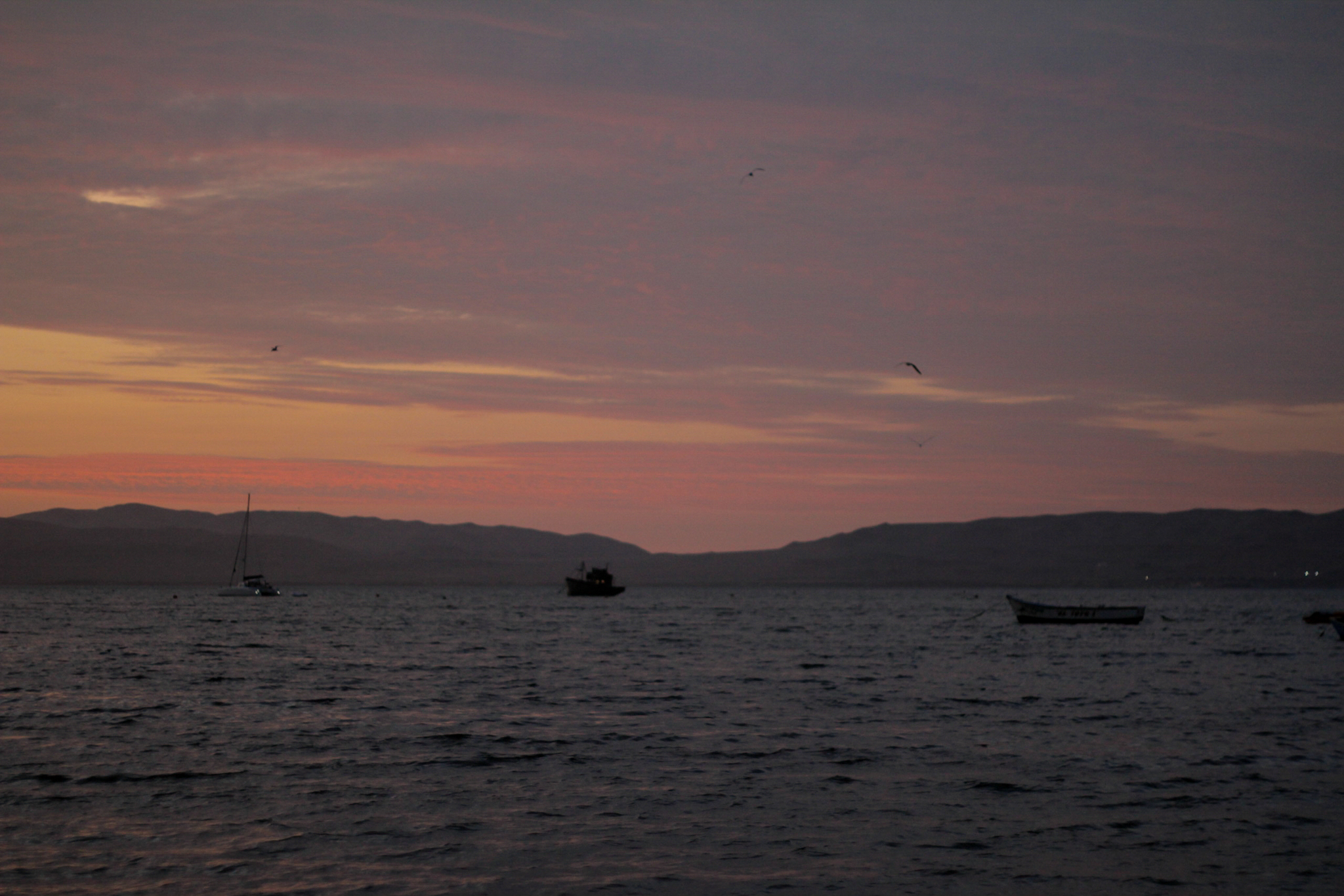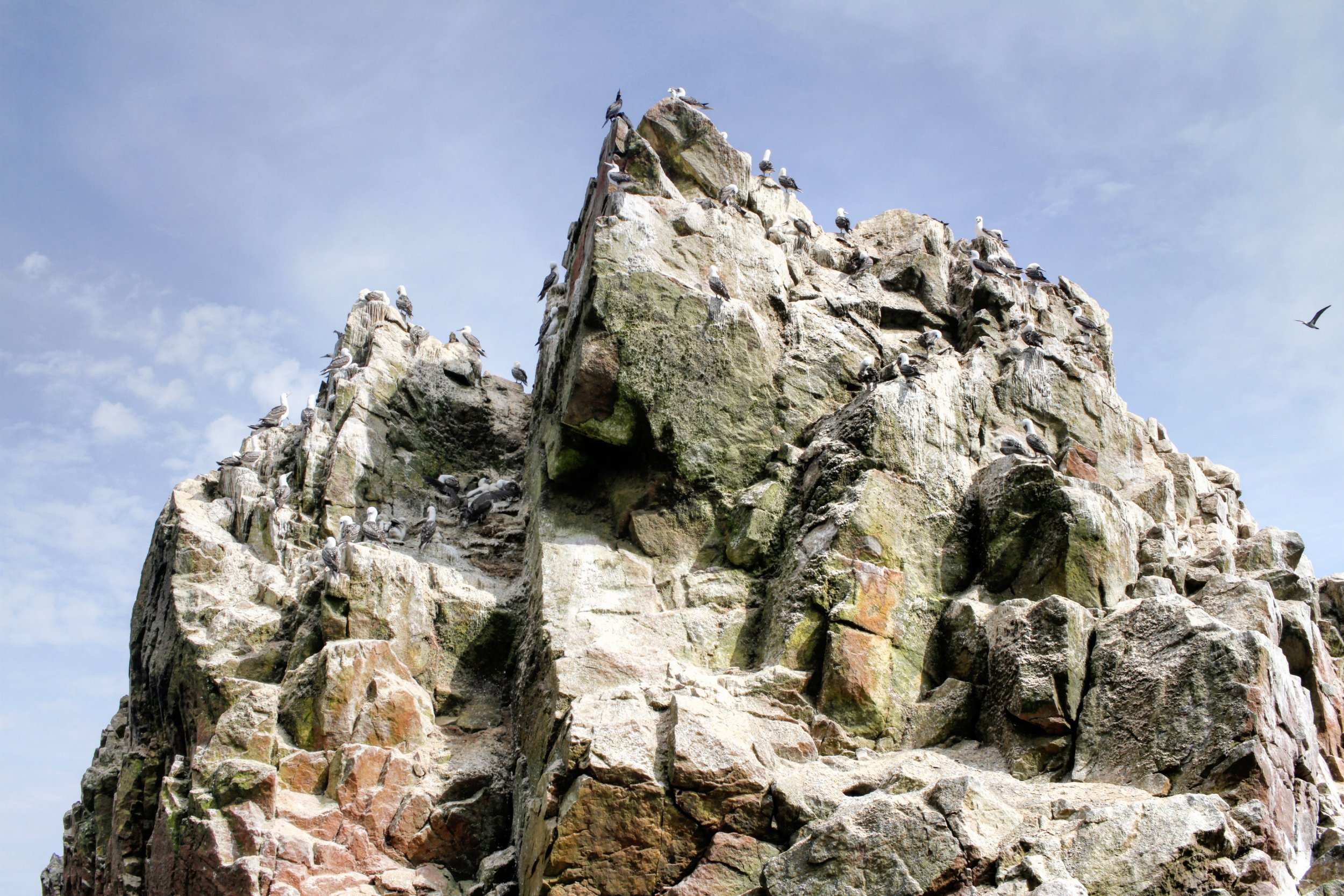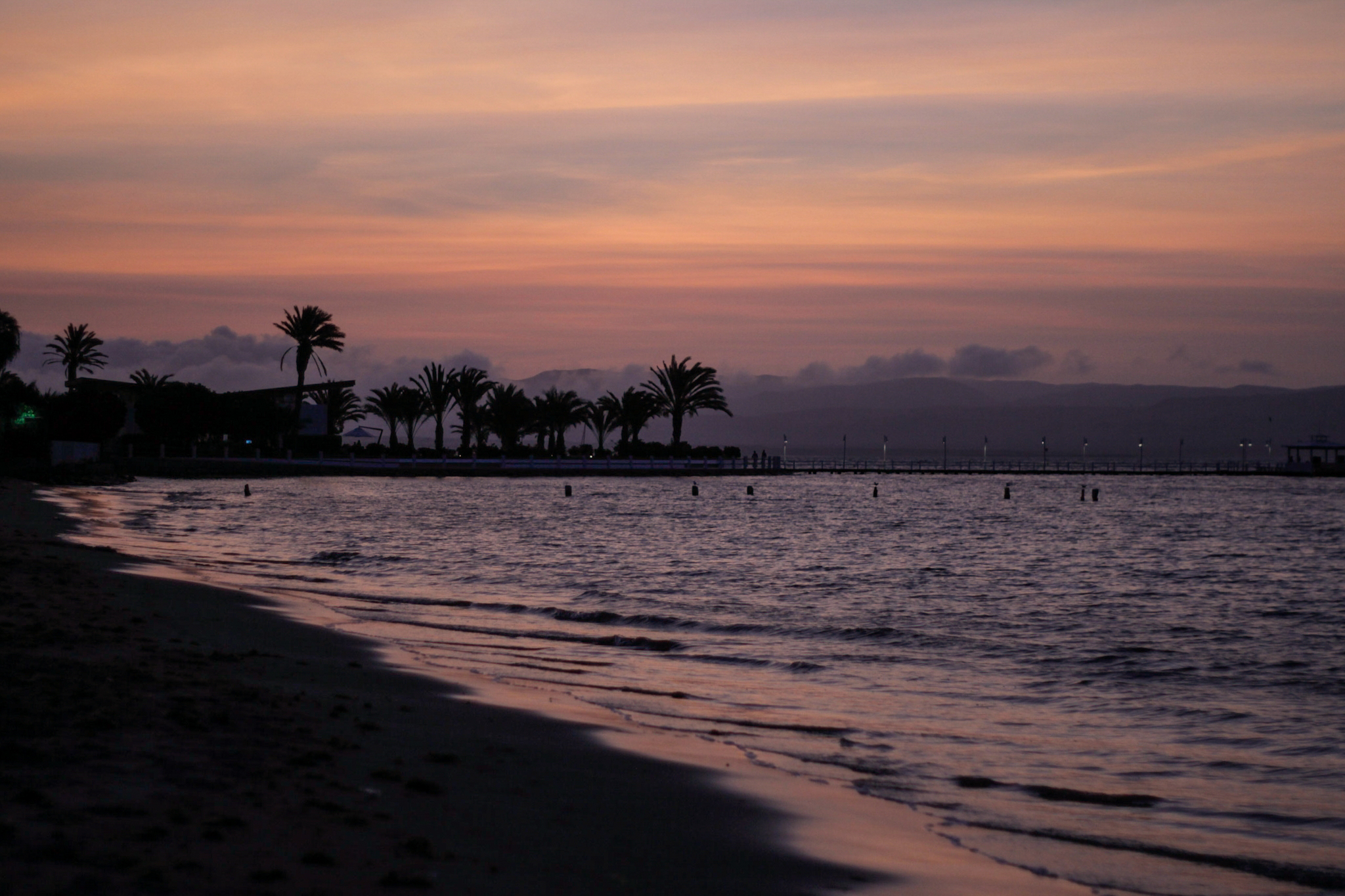Islands Made of Rock & Tropical Deserts of Paracas
Best things to do in Paracas: explore the Paracas National Reserve & spot wildlife on the Islas Ballestas islands with this travel guide.
One of my absolute favorite countries to travel, Peru is nothing short of incredible and there’s virtually nothing the country doesn’t offer.
Peru is a South American country with a diverse geography and rich biodiversity. Coastal deserts, the Andes mountains and the Amazon rainforest are major highlights.
And a multicultural population that speaks both Spanish and indigenous languages like Quechua, welcomes visitors with open arms.
Culturally, Peru is known for its pre-Hispanic Inca heritage, including sites like Machu Picchu, vibrant modern traditions and a world-renowned cuisine.
Paracas, a special little beach town on Peru’s western coast, is known for its sandy beaches and wildlife. It’s also the perfect launching point for the uninhabited Ballestas Islands, home to countless pelicans, sea lions and Humboldt penguins.
The Paracas National Reserve is a protected area stretching across ocean, desert, islands and the Paracas Penninsula, with conservation efforts sustaining the desert and marine ecosystems. There, the Paracas Candelabra, an enormous prehistoric geoglyph, lies etched into a hillside and reaches 595 feet tall, large enough to be seen 12 miles away from sea.
My time in Peru was only getting started and I was looking forward to so many exciting stops along the way. First up, was 24 hours in Lima to meet my Peruvian friend and together we would move on to the islands made of rock and tropical deserts of Paracas.
Next, we moved on to wild dune buggy rides and wine tastings in Huacachina and the “White City” of Arequipa, joining a day tour to explore Peru’s epic Colca Canyon.
Finally, we made our way to Cusco, once the ancient capital of the Inca Empire, where I’d have a terrifying near-death experience on Rainbow Mountain, tour Sacred Valley, Peru’s Andean highlands, and explore the mysterious Machu Picchu.
Best Things to Do in Paracas
Arrive / In Paracas
Admire / The sunset & gulp delicious smoothies
Cruise / Islas Ballestas
Tour / Paracas National Reserve
Wonder / At another incredible sunset
Best Things to Do in Paracas
Arrive in Paracas
From Lima, Esau and I moved south to a tiny beach town called Paracas. We caught an early afternoon "luxury" coach from Terminal de Cercanias de Lima for 40 soles. The station operates Peru Bus and is used by locals for its low prices. Our bus was nice and spacious; offering snacks and running the AC the entire way, a luxury in Peru.
Four hours later, we arrived in Paracas, making sure to confirm the proper stop as some buses pass right through town missing Paracas entirely. Esau and I risked finding a hostel upon arrival because there weren’t many options online. With suitcases in tow, we wandered into Backpackers House getting a double room for 55 soles ($15 USD) a night, not to be confused with Backpackers House the Pacific.
Paracas Backpackers House turned out to be an excellent place to stay while in Paracas. The hostel is clean and staff are very friendly. They're happy to help book transportation, as well as local tours. Backpackers House also has two courtyards and a kitchen open for guests to use. The showers have hot water and WiFi works best in public spaces. But, remember to grab some tissue for the toilets because they often forget to stock them. They do, however, give you a roll as you check in. The location is in a great spot, right next to a few cafes in the main square and we truly enjoyed our time in Paracas.
Admire the Sunset & Gulp Delicious Smoothies
After settling in, we booked tours for the following day. First thing would be an island tour to Islas Ballestas, followed by a National Reserve tour in the afternoon. Then as the sun began to set, I packed up my camera gear and we rushed to the beach a few blocks away. It was my first trip with a “real” camera and I was so excited to get in some practice time. I’d be testing out my brothers Canon 7D using 18 mm-50 mm, 50 mm and 24 mm lenses; see Getting My Feet Wet with Photography.
The beach was small and covered in seaweed but if you venture down passed the crowd there’s a peaceful stretch of land. In a rush against the sinking sun, Esau and I played around in the sand and water.
After sunset, it was time to grab a bite to eat. With Esau by my side, I learned pretty quickly that asking for "el menu" would get you an entire meal for just a few bucks. Traditionally you choose from a set menu which typically includes an appetizer, entree, drink and dessert. The set menu varies by restaurant so each one typically has a chalkboard outside listing what's available.
This evening I chose pork, rice and beans and salad for 10 soles ($3 USD). Esau ordered fried fish for double the price. Our food was tasty but service was slow.
After dinner, we wandered around the restaurants near the beach picking up a delicious starfruit smoothie but did take note that the more popular touristy restaurants were much more expensive than those tucked away from the shore.
Cruise Islas Ballestas
Our guide was to arrive at the hostel at 7:30 a.m. so Esau and I woke early to prepare for the day. Across the street, we found a woman with a cart selling a traditional drink made of quinoa and fruit called quinua carretillera, and little sandwiches of avocado, egg or chicken. Being gluten free, I tossed the bun and ate the insides and learned that if you drink your quinoa quickly they'll pour another glass for free. Traditionally, the drink is simmered with pineapple but flavors vary, a must try, super filling and hearty.
Our guide arrived with a few other travelers and we were off to the docks, a 10 minute walk. Once at the docks, it was very busy and overwhelming. The Islas Ballestas tour cost 30 soles ($10 USD) but we also needed to pay the entrance fee to the islands. Because we planned to take the Paracas National Reserve tour we bought a pass for that, as well. Together, both passes cost 22 soles. But keep in mind, Peruvians and South Americans often get discounts.
The group packed into a small speedboat, maybe 30 of us, and hit the water toward the islands. The Ballestas are a group of rocky islands covered with wildlife. They are located off the Pacific coast of Peru and not to be missed if you're in Paracas. After about 10 or 15 minutes we reached the famous Candelabra, a mysterious symbol carved into the soil 600 feet tall. A number of theories exist to explain its meaning but none are certain.
The boat took off to another island about 20 minutes away. The ride was super windy and chilly so I was happy to have a scarf, along with sunscreen. Plus we lucked out, our seats in the back of the boat offered the best photo opportunities.
The boat weaved in and out of the islands as the guide spoke about wildlife in the area. Hundreds of sea lions and thousands of birds covered each one. They're protected so you can’t swim with the animals or walk on the islands but you can get pretty close by boat.
Often times, male sea lions are banished to solitary treatment when they lose a fight for power among another males. This treatment can last for months until they are accepted back into the group. We saw many such males.
Many of the rock formations were pretty incredible themselves. Arches or caves naturally formed over time from the wind or waves crashing about.
Here, all the pregnant female sea lions gather on one island. Each mother and baby have a distinct sound they use to find one another. From our boat you could hear the sea lions moaning out in search of their young ones.
After an hour and a half of exploring the "Poor Man's Galapagos", as it's commonly nicknamed, the boat began to head back toward the shore.
Around 10 a.m. we landed back at the docks to unload. Super hungry, Esau and I found a street cart selling tamales and ordered pork and chicken with spicy yellow sauce and onions. Wow, talk about delicious.
Esau also recommended we try the traditional drink chicha morada, a sweet dark purple drink made of corn. For the two of us, tamales and drinks cost 15 soles ($5 USD).
Tour Paracas National Reserve
After freshening up at the hostel, a bus arrived for the Paracas National Reserve tour. Our first stop was Museo de Sitio Julio C. Tello, named after the archaeologist who in the 1920’s discovered nearby burial sites over 2,000 years old. These sites provide the exhibits for the museum.
Designed by Barclay & Crousse to replace another structure destroyed during an earthquake in 2007, this red pigmented concrete museum stands at the entrance to the Paracas National Reserve and is location very close to the Great Paracas Necropolis, the oldest archaeological site in the region.
The exterior of the museum itself is beautiful. Its geometric shapes, colors and natural materials almost disappear in the surrounding landscape.
Next up, our tour group entered the Paracas National Reserve, one of the largest protected desert reserves in South America. The Paracas National Reserve is home to many plants, birds and animals and covers nearly 500,000 acres of land.
The first stop was La Catedral, a viewpoint named for a famous rock formation that was badly damaged during the earthquake in 2007. Even so, the view was gorgeous.
Our next destination was Playa Roja, a beach that lies between Playa Lagunillas and Punta Santa Maria. The red sand gets its color from rock that contains magma. The viewpoint is breathtaking but extremely windy so hold on tight.
Our last stop inside the reserve was Playa Lagunilla, where we had an hour to swim, eat and explore. As a special touch the tour guide offered each of us a delicious shot of mango Pisco sour as we arrived. Pisco is typically a colorless brandy produced in winemaking regions of Peru and Chile, made by distilling fermented grape juice into a high-proof spirit.
Many of the restaurants near the beach were crowded and overpriced so Esau and I went in search of something else. Hidden away from the water we found a little cart with a woman selling sandwiches and fried fish. After ordering a plate of fish, she disappeared around the corner and began cooking up a storm. A few minutes later, I had a piping hot plate full of delicious food.
Once finished with our incredible meals we relaxed down by the water, dipping in our toes and enjoying the gorgeous weather as others swam in the cool waters or passed by in fishing boats. Even wildlife basked in the sun.
Esau and I decided to see if we could reach a viewpoint over the bay so we walked up a path that wraps around the beach from above overlooking the entire area. We could see stillness for miles.
Playa Lagunilla, was beautiful and relaxing and overall, the tour was a wonderful experience. We were able to see so much in such a short time. The only bummer was that we didn't see as much animal life as anticipated. I had heard about sightings of penguins and flamingos and other sea creatures but no such luck.
Wonder at Another Incredible Sunset
In the late afternoon our group began to head back into town. Esau and I took a few hours to decompress and then stepped out to enjoy another beautiful sunset.
The colors and reflections were absolutely stunning. Shades of pink, peach and purple spread across the sky. It was one of the best I’ve seen. And the warm waters of Paracas Bay sure didn’t hurt.
Toward the southern end of the beach we bumped into a strip of local restaurants. I'm not sure why we didn't notice them before but were super happy to find something authentic. Esau talked two restaurants sitting side by side into serving us different set menus at the same table, so I chose El Galeon and Esau the restaurant to its right. For 20 soles, I ordered fried fish and rice with ceviche as an appetizer and chicha morada to drink.
In the morning, Esau and I would move on to Huacachina, a small oasis town in the middle of the desert with bus tickets purchased through our hostel for 20 soles.















































